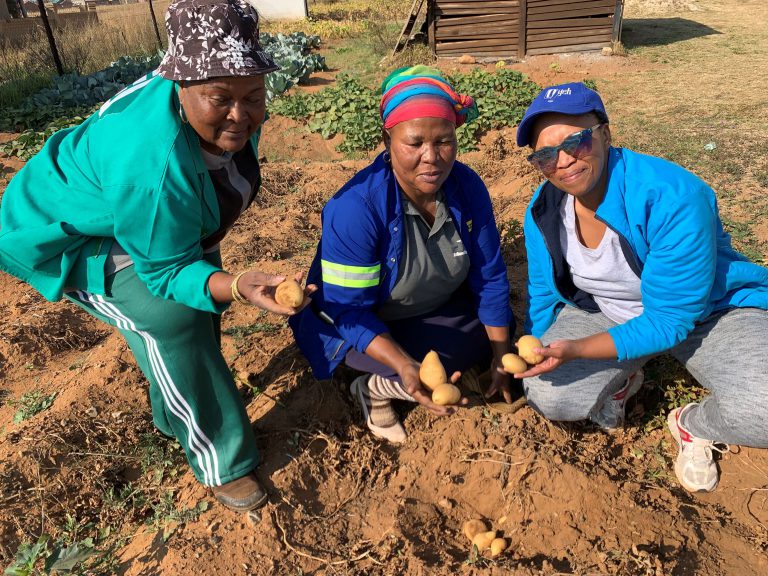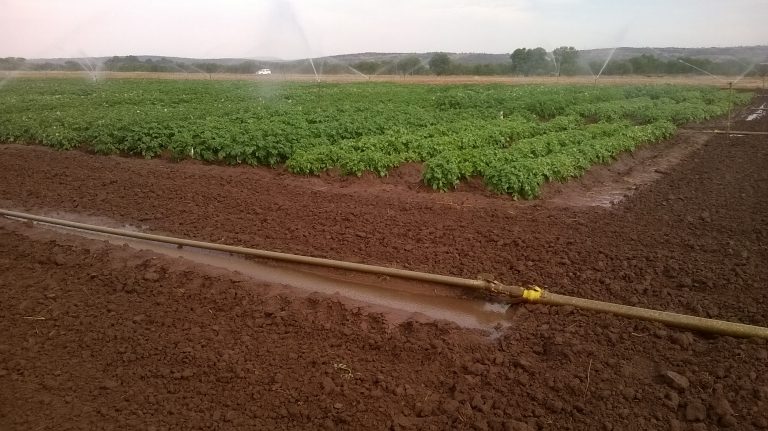This article was written by Erik Alexandersson, Researcher at the Department of Plant Protection Biology, SLU.

Today, 26 October, is the offical potato day here in Sweden and a good opportunity to look closer at this quite nutritional crop. The potato is grown and eaten all over the world and production is on the rise in many low income countries – primarily in Africa. The versatility and adaptability of this beloved spud is the key to it´s wide spread. However, diseases and drought due to changed climate present threats to yields in the future.
Potatoes have long been essential for Western cuisine. They are loved in many forms. Why not boiled together with meat and sauce, as fries accompanying that novel non-meat burger or simply as crisps, which can be seen as the centrepiece of cosy television time with the family. Worldwide potato is today the third most consumed crop.
The potato retains its popularity in spite the rise of the fast-boiling pasta and popularity of low-carb diets. Consumption in the industrialised world have been stable the last 20 years even if it now and again ends up in the dietary cold box.
In low-income countries, potato production is still on the rise though. In 2008, the total production even passed that of the industrialised world. Not the least in sub-Saharan Africa where incidence of malnutrition are among the highest in the world, and sadly more than 15% of the total population still lacks sufficient food.
In fact, its cropping area and production have increased more than those of any other food crop in Africa (1). Today, it is maybe foremost an important cash crop for small-scale farmers, but since the areal and demand are rising we can predict that it will have a greater importance to future food security in the region.
Potato has a fantastic ability to adapt and yield in different climate conditions. Originating from the Andes the potato is grown on all continents except Antarctica. Its ability to produce well in so many different environments is an important part of its success. Still many diseases affects the production. In temperate regions late blight is considered as one of the most dreaded plant diseases. Extensive research has gone into combating late blight and today we have both conventional bred and genetically modified potatoes carrying additional resistance genes with high level of resistance as well as efficient pesticides.

However, in an African perspective, other diseases such as early blight, which thrives in warmer climates and insect pests that destroy harvested tubers can cause larger problems. The underlying mechanisms of several other diseases than late blight are less studied and lesser known. Unfortunately, efficient resistance factors are unknown and remain to be discovered for use in breeding programmes. For early blight, there is also an increased problem with pesticide resistance.
For the small-scale farmers it is not easy to afford to protect their potato crop or take the right measures. One powerful way to convert research into practice are field demonstrations for farmers, advisers and policy makers, something we tried out with our colleagues Lerato Matsaunyane at the Agricultural Research Council in Pretoria, South Africa and Tewodros Mulugeta at Kotebe Metropolitan University in Ethiopia.
Furthermore, for the farmers in Southern Africa, unpredictable rains have caused big problems for agriculture. In this context, potato will have a challenge as it is sensitive to drought, also to shorter micro-droughts and clearer focus on research on drought tolerant varieties is needed. Unfortunately, climate change is expected to have a very large impact on agricultural production in sub-Saharan Africa. The need for a future drought tolerant potato is evident.
Luckily, the International Potato Center and other research institutes are doing multifaceted research to provide a disease free and drought tolerant potato suitable for different needs in African agriculture.
But, today is the official potato day here in Sweden, so let us just for a moment look away from these beauty spots of this loved spud. Did you for example know that the nutritional value of potato is not that bad! Tubers harbours fibre and important nutrients such as vitamin C, tocopherols and carotenoids! And with the right cultivar under the right conditions it can be one of the most high-yielding crops! With a production of 15, 40 or even 60 tonnes per hectare it can for sure feed many hungry stomachs.
References
(1) Ortiz, O., & Mares, V. (2017). The historical, social, and economic importance of the potato crop. In The Potato Genome (pp. 1-10). Springer, Cham
